Editor
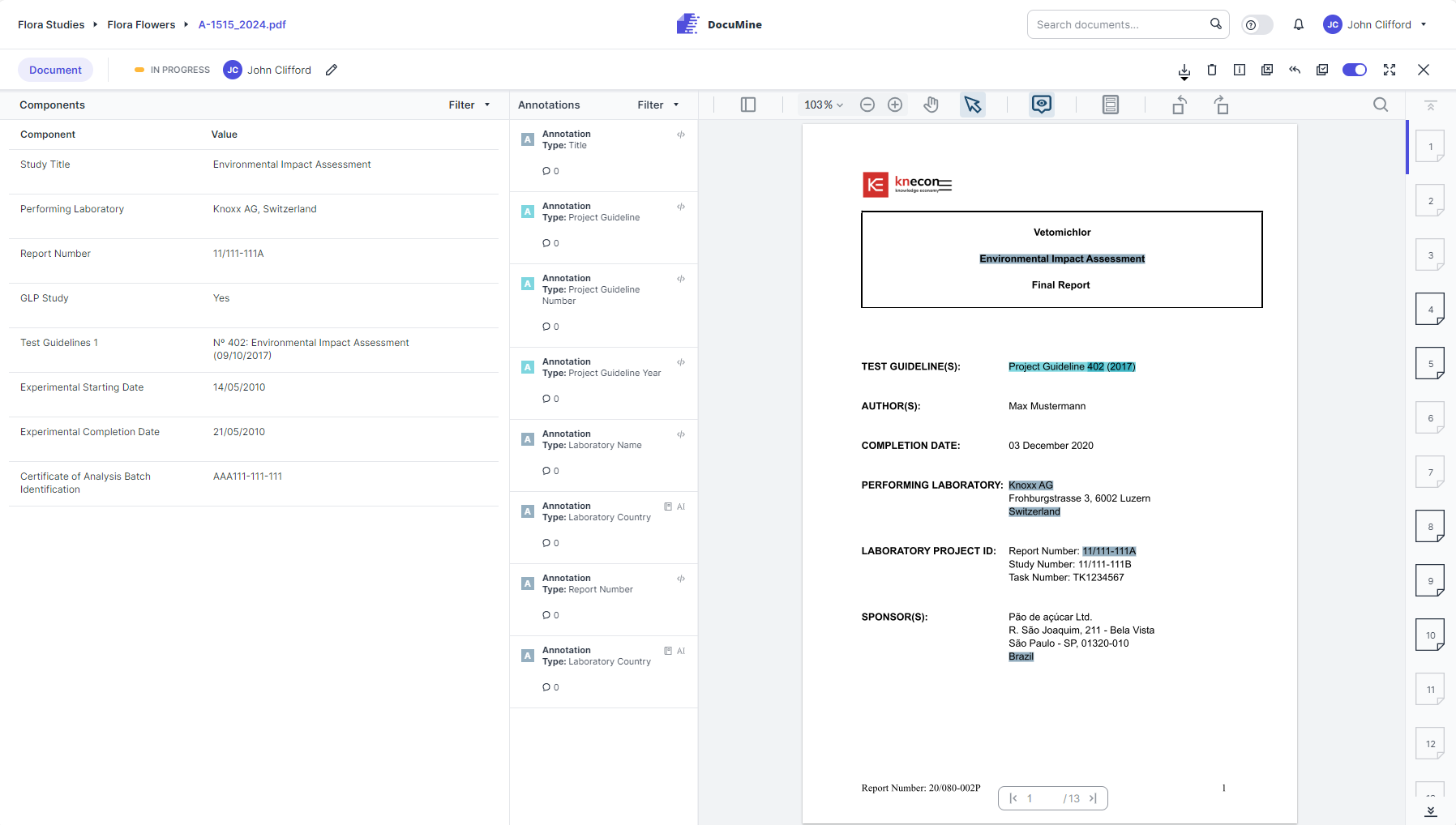
Editor
The editor allows you to:
View the source document (incl. annotations and components extracted by DocuMine during the analysis)
Download the extracted components and extraction report(s)
You need to be assigned to a document to be able to edit the components.
User interface of the editor
The editor is organized as follows:
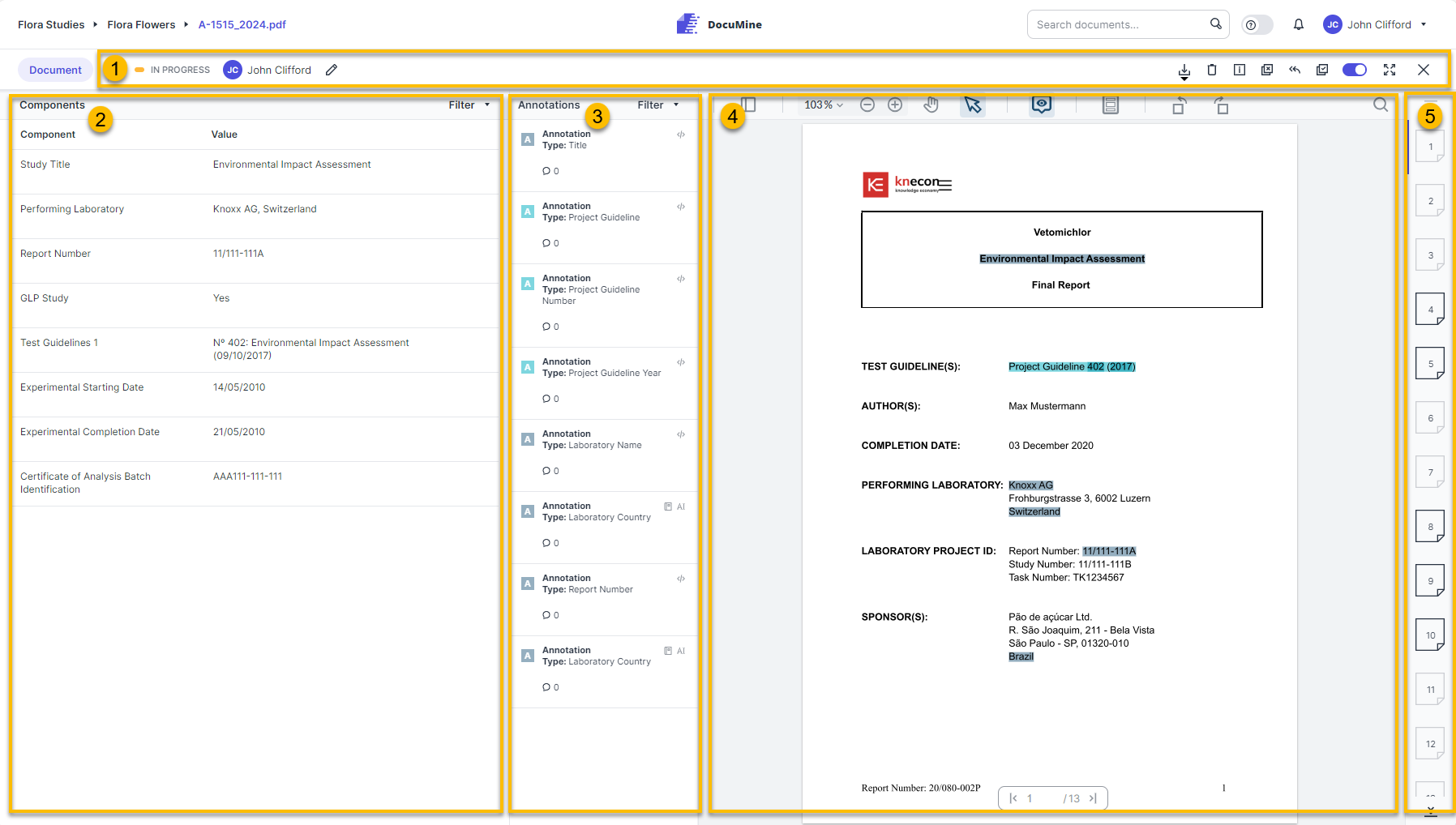
Editor
Components
Annotations list
Page selector
The Components on the left represent the final output that you can export in various formats.
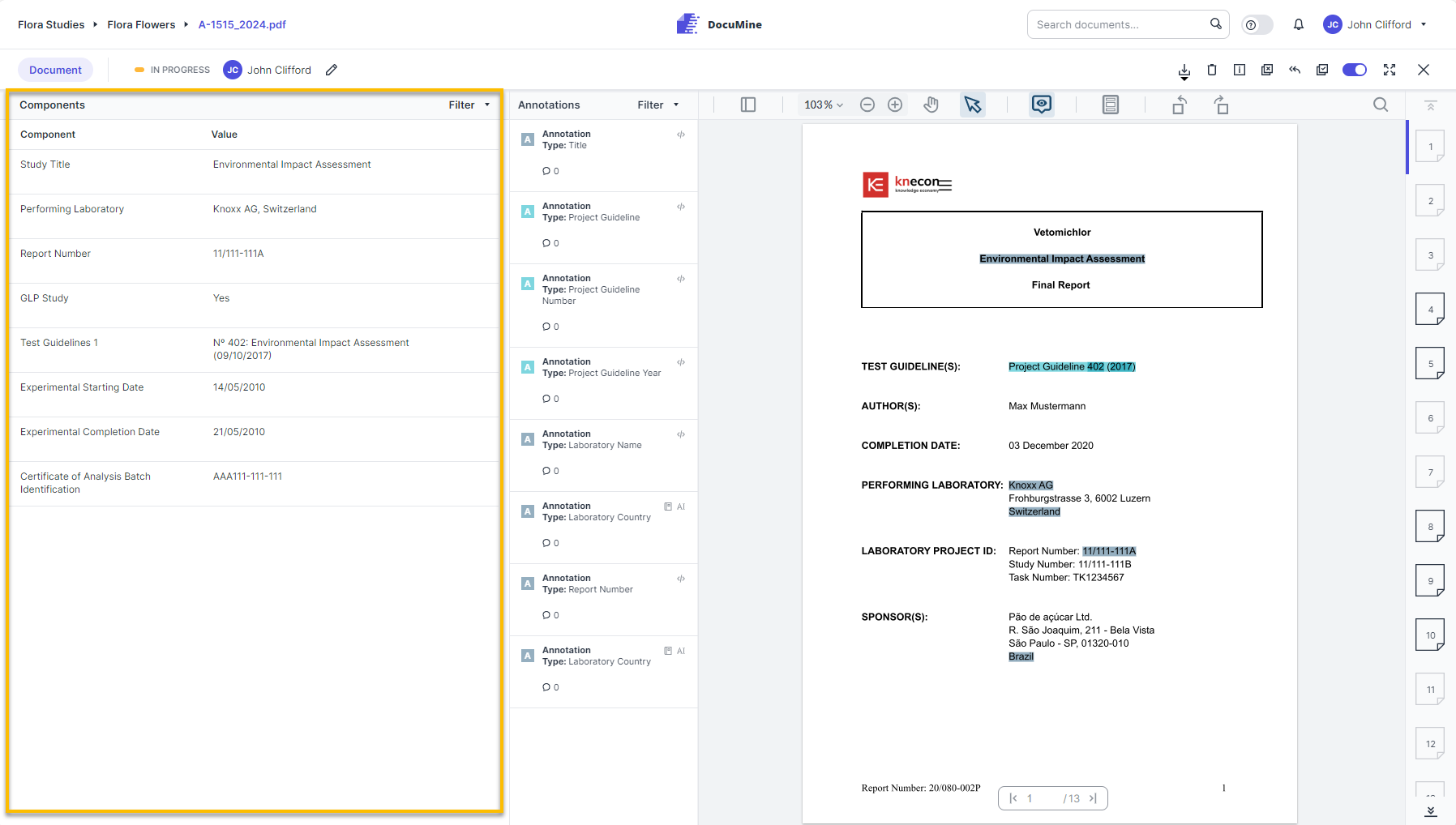
Components table
When you click on a component:
the component is highlighted in blue;
the annotations list in the center shows all the annotations (extracted information) related to the selected component.
When you navigate to a page that does not contain any annotations relevant to the active component, the annotation list will show "This page does not contain annotations for the selected component or filter." (However, unrelated annotations will still be visible in the document.)
the page selector on the right shows the pages containing component-relevant information. You can easily navigate through the pages by clicking on one of the pages;
the document viewer jumps to the page containing the first piece of information extracted to build that component;
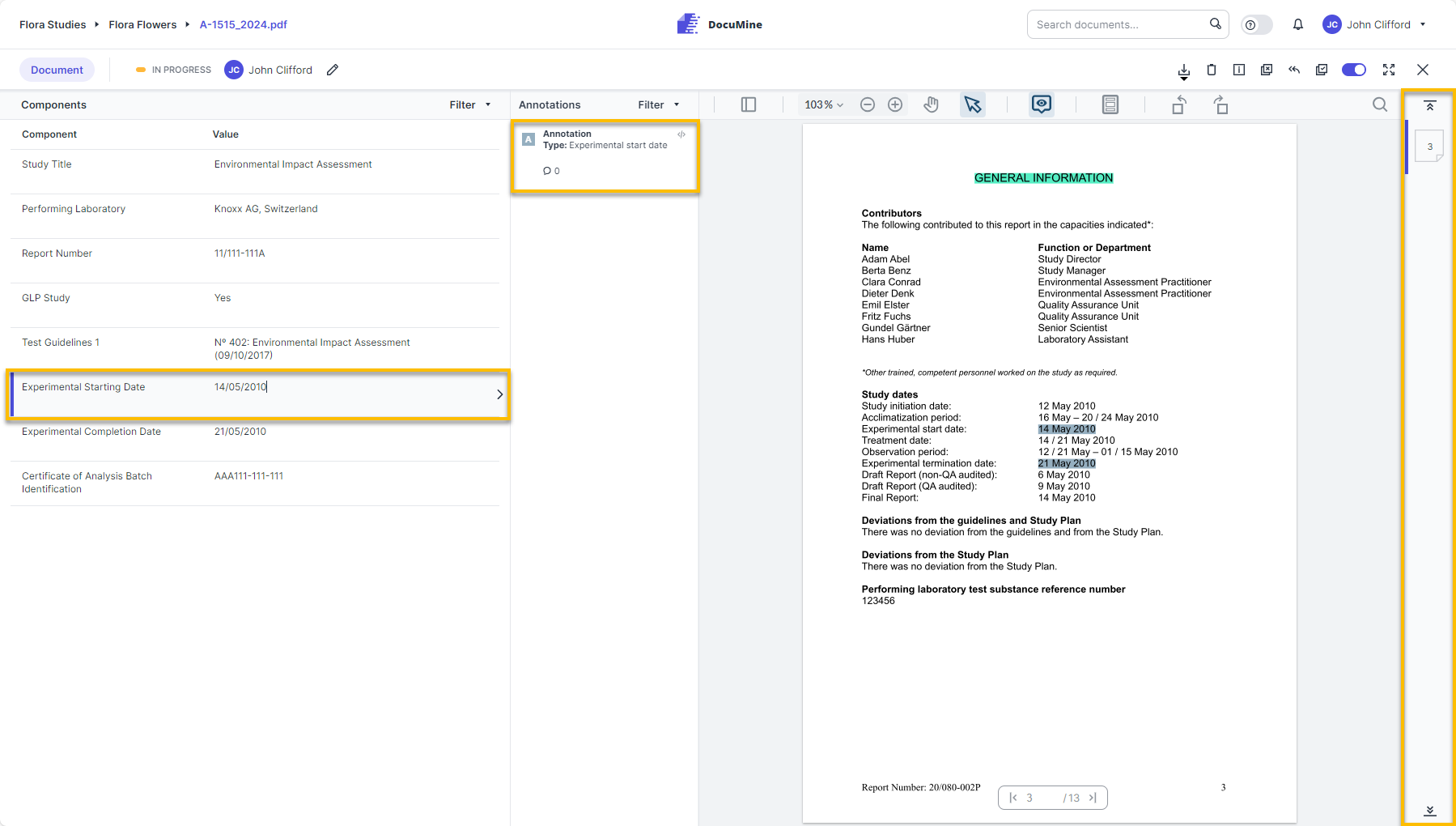
Selected component
When you hover over a component value, a tooltip shows how the component was constructed.
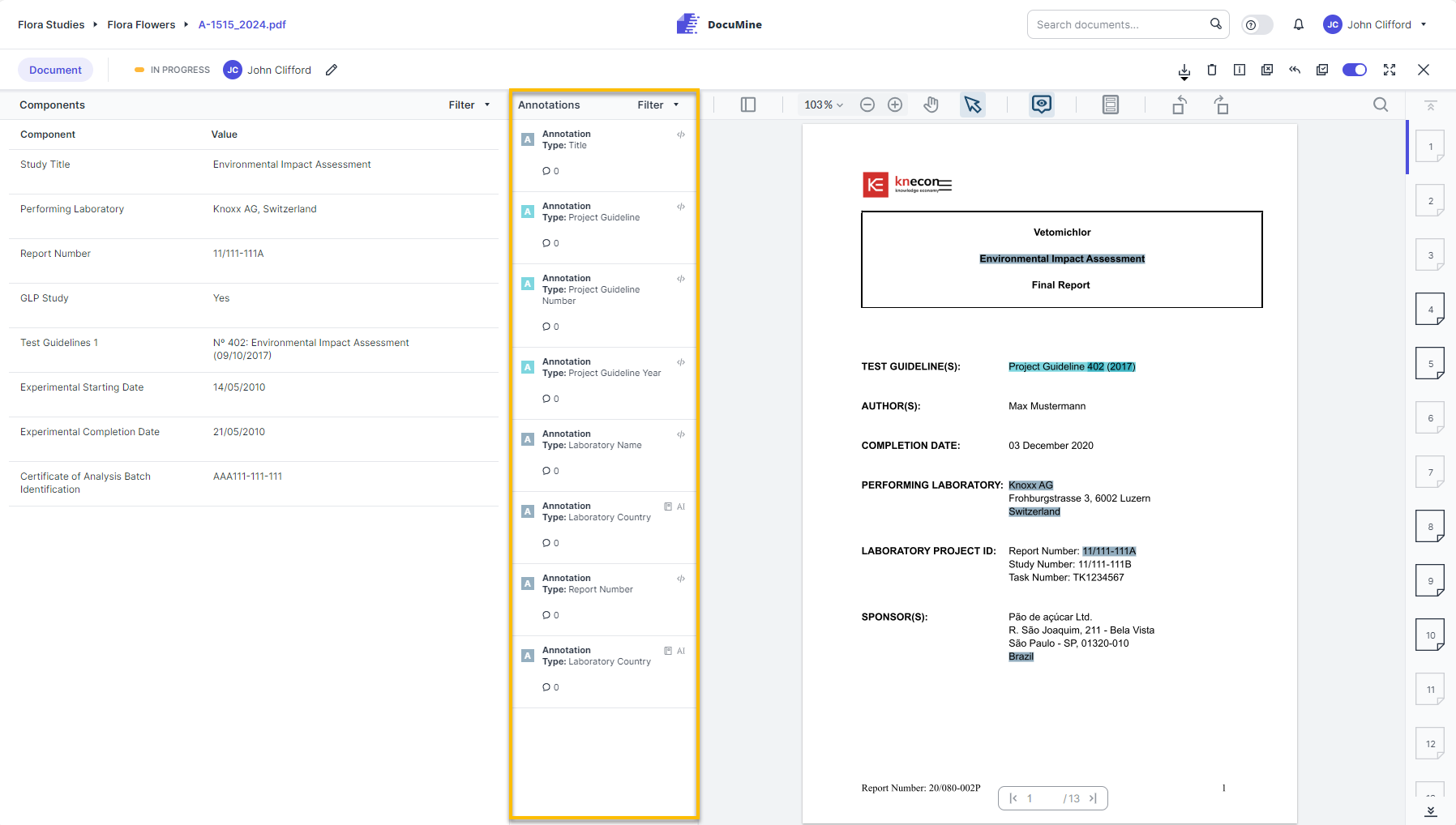
Annotations list
The annotations list in the center of the editor lists the pieces of information that have been annotated and extracted from the currently visited page. Each list entry provides information on the respective annotation type and applied rule(s).
 |
Component type
The annotation type informs about the piece of information that has been extracted. Components can be built from one or several pieces of information.
That means the annotation value may correspond to the component value or represent a part of the component value, and/or have been transformed (e.g., a date might be transformed into another date format) during the component construction that follows the information extraction.
When you select an annotation list entry, the entry is highlighted with a blue bar and respective annotation is highlighted in red in the document (and vice versa).
The list entries show the annotation type.
Arrow navigation
Use the up/down arrow keys to jump between the listed annotations.
The processed document is displayed on the right of the editor.
Relevant information detected by DocuMine based on the defined ruleset is annotated (highlighted). The highlighting color indicates the respective information type (annotation type). The annotated value is taken as-is for the component value, can constitute a part of the component value, or can be transformed into the component value.
The assigned user can add manual annotations—whether the corresponding values are extracted depends on the rules.
Page navigation in documents
Page number indicator at the bottom of the screen:
Click on the arrows or click on the current page number and use the keyboard to enter the page you want to go to.
Page selector to the right of the document:
You can find a list of pages to the right of the document. The page you are currently on is highlighted in blue.
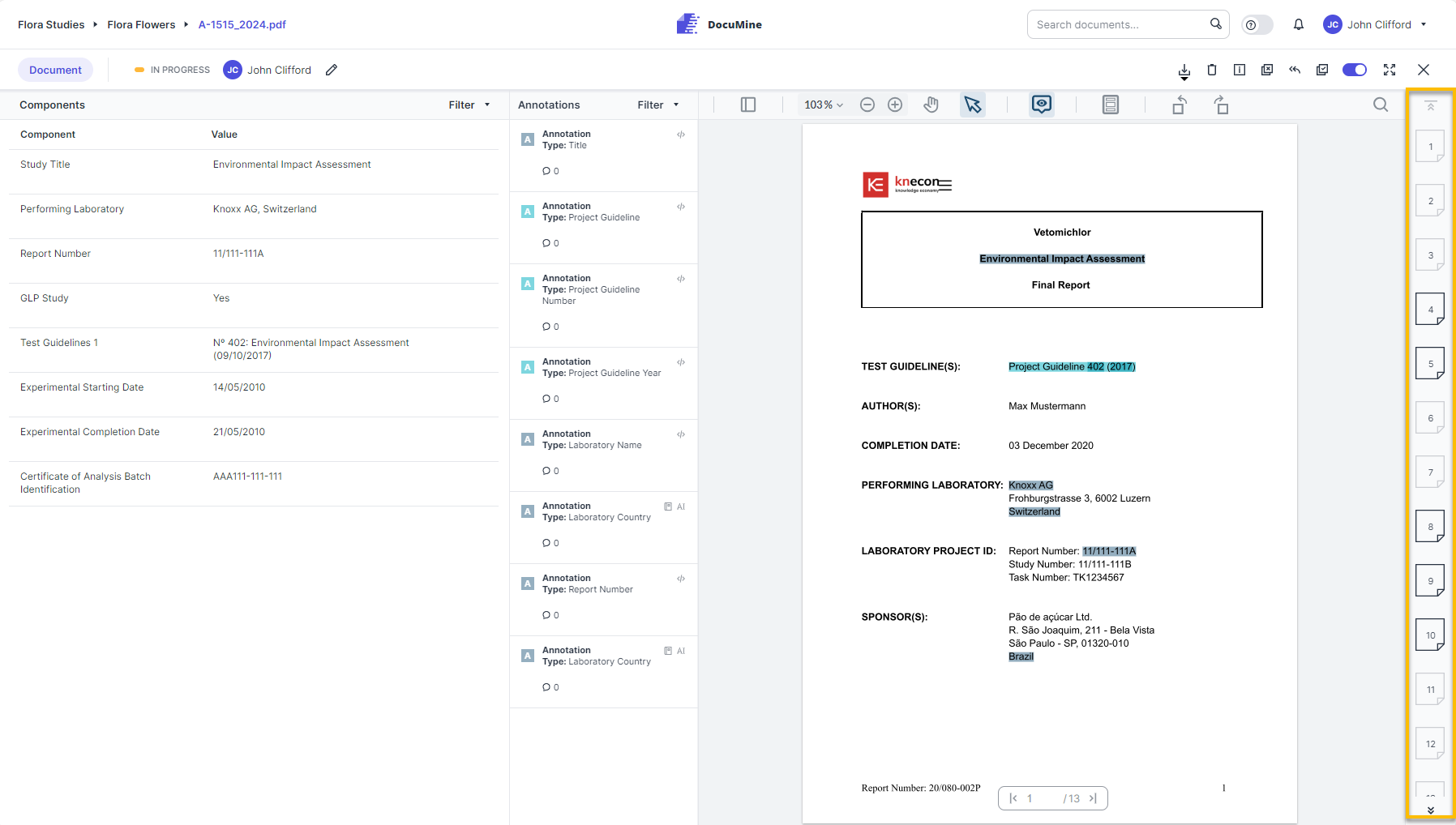
Page selector
Click on a page number in the list to open the respective page. You can move between pages using the up/down arrow keys.
When you select a component, only the pages containing relevant annotations are displayed in the page selector list. When you filter the annotations list, only the pages containing annotations matching the filter are displayed in the pages list. For further information, please see Filter workload annotations.
Pages you have already visited are grayed out in the page selector list. If DocuMine applies changes to a previously visited page as a result of a reanalysis, the page is considered unvisited again.